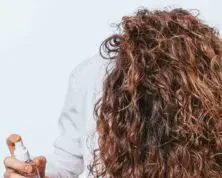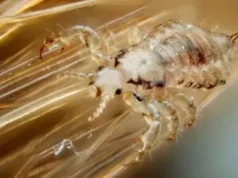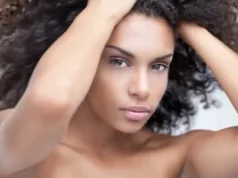If you decide to dye your hair a new colour and frequent swimming pools, you might be concerned about how the chlorine water will impact your just coloured hair.
This is the reason we made the decision to look into the matter a little more and do research. You now possess this article as a result.
By doing so, you will be able to maintain the colour of your hair and reduce how frequently you visit a hair salon for redyeing.
How soon Can I Swim After Coloring My Hair?
The waiting period before swimming after dyeing your hair depends on the type of hair dye used. Here are some general guidelines:
Also read: Can I Swim After Coloring My Hair?
How Long Shall You Wait Before Swimming If You Used Permanent Hair Dye?
Permanent Hair Dye: Permanent hair dye penetrates the hair shaft and alters the hair’s natural color. It typically contains ammonia and requires a chemical reaction to set the color. For permanent hair dye, it is generally recommended to wait at least 48 to 72 hours before swimming in a swimming pool. This waiting period allows the color to fully develop and the hair cuticles to close, reducing the risk of color fading or damage.
Also Read: Why Does My Hair Smell Brunt?
How Long Shall You Wait Before Swimming If You Used Semi – Permanent Hair Dye?
Semi-Permanent Hair Dye: Semi-permanent hair dye does not contain ammonia and usually lasts for a shorter duration, gradually fading with each wash. If you have used a semi-permanent hair dye, it is still advisable to wait at least 48 hours before swimming in a pool. This waiting period allows the hair cuticles to close and helps minimize color bleeding or fading.
It’s important to note that these are general recommendations, and the specific instructions provided by your hairstylist or the hair dye manufacturer should be followed for the best results. Different hair dye brands and formulations may have slightly different recommendations, so always refer to the instructions provided with the product.
Additionally, remember to take the necessary precautions mentioned earlier, such as using a swim cap, applying a leave-in conditioner, rinsing with fresh water, and using UV protection products, to further protect your hair while swimming.
Is Chlorine Bad For Dyed Hair?
Chlorine can have negative effects on dyed hair, especially if the hair has been recently colored. Chlorine is a strong chemical used in swimming pools to kill bacteria and maintain water quality. When dyed hair comes into contact with chlorine, it can cause the color to fade or change. Additionally, chlorine can make the hair dry, brittle, and more prone to breakage
How Hair Dye Reacts to Swimming In Chlorine Water?
Hair dye, especially permanent hair dye, can react with chlorine in swimming pool water, which can lead to color fading or changes in the hair. Chlorine is a strong chemical used in pools to kill bacteria and maintain water hygiene, but it can have adverse effects on dyed hair. Here’s how chlorine can affect dyed hair:
- Color Fading: Chlorine can strip the color molecules from the hair shaft, causing the hair dye to fade more quickly than usual. This can result in a dull, washed-out appearance.
- Color Changes: Chlorine can also interact with certain hair dyes, particularly those with a warm or red undertone, leading to undesired color shifts. For example, blondes may experience greenish tints, while brunettes may notice their hair turning brassy.
How to Protect Your Dyed Hair From Chlorine In a Swimming Pool Water?
To protect your dyed hair from chlorine in a swimming pool, consider the following precautions:
- Wet Your Hair: Before entering the pool, wet your hair with fresh water. Saturated hair is less likely to absorb chlorine-laden water from the pool. This simple step can help minimize chlorine damage.
- Use a Swim Cap: Wearing a swim cap creates a physical barrier between your hair and the pool water, preventing direct contact. While it may not provide complete protection, it can significantly reduce chlorine exposure.
- Apply a Leave-In Conditioner: Before swimming, apply a leave-in conditioner specifically designed for protecting hair from chlorine. This can create a protective barrier, reducing chlorine absorption and minimizing damage to your hair color.
- Rinse Immediately After Swimming: As soon as you’re done swimming, rinse your hair with fresh water to remove chlorine residue. This step helps to prevent further chemical interaction and reduces the potential damage to your hair color.
- Use a Clarifying Shampoo: Once a week or as needed, use a clarifying shampoo to remove any chlorine buildup from your hair. This helps prevent chlorine from lingering and causing long-term damage to your dyed hair.
- Deep Condition Regularly: Dyed hair is often more prone to dryness and damage. Regular deep conditioning treatments can help restore moisture, keep your hair healthy, and maintain the vibrancy of your hair color.
Remember, while these precautions can help minimize the effects of chlorine on dyed hair, it’s still best to wait for the recommended waiting period after dyeing your hair before swimming, as mentioned earlier.
Frequently Asked Questions
If I swim in a pool for the first time following the colouring process, will all of the hair colour wash off?
This is not possible, no! But, if you don’t wash your hair after visiting the salon, the dye on your freshly dyed hair may leak.
Does chlorine have the same effects on all coloured hair?
Indeed, this chemical has the same effects on all types of hair dye. This is why it’s so crucial to keep your hair protected while swimming.
Can pool water splashes harm my hair?
It’s really unlikely. Because chlorine is not an acid, it won’t cause your hair to become discolored.
How often should I deep condition my dyed hair?
Dyed hair tends to be more prone to dryness and damage, so it’s a good idea to deep condition regularly. Aim for at least once a week or as needed, using deep conditioning treatments specifically formulated for colored hair.
What should I do if my hair color fades after swimming?
If your hair color fades after swimming, you can use color-safe shampoos and conditioners to help maintain the color. Consider using products that specifically target color-treated hair and minimize heat styling to prevent further fading






